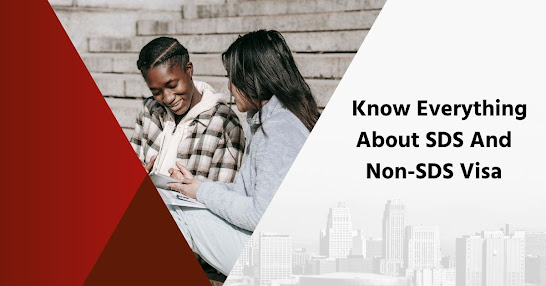Know Everything About SDS And Non-SDS Visa
Students interested in pursuing higher education in Canada may become confused by words like SDS and non-SDS while applying for a visa. Let's take a look at each of these notions and how they vary. The difference will tell the non-SDS visa success rate and the SDS visa success rate.
The Student Direct Stream (SDS), formerly known as the Students Partner Program (SPP), is a Canadian Immigration project that allows students to apply for visas under the SDS category, while the Non-SDS category is referred to as the General Category. It's yet another way to apply for a place to study in Canada. Non-SDS is a general visa application procedure that allows persons who do not fit the visa standards to study and work in Canada for a limited period of time. Let us go further and learn more about the SDS versus Non-SDS for Canada visa applications notion now that we have a better understanding of it.
Also Read about the Canada embassy fees.
What do you understand by SDS?
The official name of the SDS is Student Direct Stream, and it was created to simplify the process of students getting student visas through the Canada Study Permit Application more efficiently. Only Indian and Brazilian students are eligible for SDS. Candidates would, however, be needed to meet specific conditions imposed by Immigration Refugees and Citizenship Canada in order to study in Canada.
What exactly is Non-SDS?
Knowing the difference between SDS and Non-SDS for Canada visa applications is crucial for students who want to study abroad in a nation like Canada. Since we've already covered SDS, let's move on to Non-SDS. Non-SDS students can apply for a student visa to study in Canada if they do not meet the SDS standards. For students seeking temporary residency in Canada, there is a normal visa application process.
SDS and Non-SDS Visa Application Process
Both SDS and Non-SDS visas have a similar application process. While filling out the form and submitting their application, students must pick between the SDS and non-SDS categories. A step-by-step guide on applying for SDS and Non-SDS visas is available here.
Create a GCKey account on the Immigration Refugee Citizenship (IRCC) website.
Log in to your account and fill out all of the required information for the SDS/Non-SDS visa based on your eligibility.
Scanned copies of needed documents should be uploaded.
Costs are divided into two categories: application fees and biometrics fees. A CAD 150 application cost is required per individual, with an extra CAD 85 biometrics charge.
After paying the money, students will receive a link to a biometrics request letter. To expedite the application process, they must furnish biometrics (fingerprints and photographs).
After the biometrics form is approved, students may be required to undergo medical tests and background checks.
Upon acceptance of the Visa, they will obtain a letter of introduction, a temporary residence visa to visit Canada as an international student, or an electronic travel authorization (eTA).
The competent authorities will validate the letter of introduction and temporary residence visa at the port of entry once the student arrives in Canada.
The officer will grant their study permit if all of the eligibility conditions have been met at the entrance port.
Conclusion
From the above discussion, now you understand everything about the SDS and Non-SDS Visa and their processes.


Comments
Post a Comment